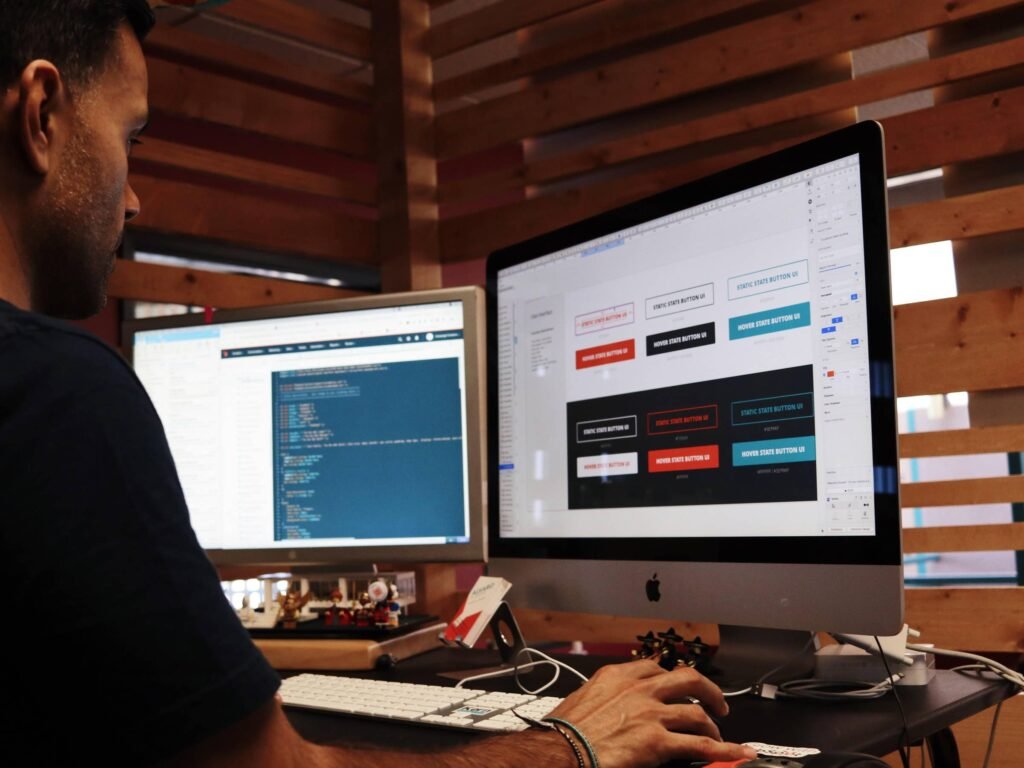What Does A Web Designer Do?
A web designer plays a crucial role in creating the online experiences we come across on a regular basis in the ever-expanding digital world. This essay explores the diverse field of web design, illuminating the duties, competencies, and creative process of this vibrant industry. Defining the Role A web designer is a specialist in making websites that are both aesthetically pleasing and easy to use. Their work covers every aspect of the user experience, from navigation to functionality, going beyond aesthetics. Web designers create digital environments that enthrall and connect with users by fusing technological know-how with creative flare. Key Responsibilities A web designer has a wide range of duties that include both artistic and technical elements. They choose color schemes, create images, plan the general layout, and guarantee the smooth integration of various elements. Additionally, web designers collaborate closely with web developers to bring their visual concepts to life. Skills Required Gaining expertise as a web designer requires a certain set of abilities. Gaining expertise in design software such as Adobe Creative Suite and coding languages like HTML and CSS is essential. A fundamental component that enables designers to innovate and produce aesthetically spectacular websites is creativity. Effective client and development team collaboration also requires strong communication skills. The Process of Creativity A web designer goes through numerous stages in the creative process. Understanding the needs of the customer and the intended audience is the first step. Designers then work on wireframes and prototypes to see how the layout and functionality will look. The choice of typeface, graphics, and color schemes that come next are all intended to provide a unified and eye-catching design. The User Experience and Responsive Design Responsive design is given top priority by web designers to make sure websites work well on a variety of devices. By streamlining navigation, speeding up load times, and designing user-friendly interfaces, they prioritize improving the user experience. Regardless of the technology they use, the objective is to give users a great and engaging experience. Tools of the Trade Many tools are used by web designers to implement their ideas. For designing layouts and prototypes, Adobe XD, Sketch, and Figma are well-liked; for putting designs online, Sublime Text is a useful coding tool. In order to provide cutting-edge solutions, web designers must stay current on the newest design trends and technological advancements. Challenges and Innovations Keeping up with changing design trends, managing client expectations, and striking a balance between utility and aesthetics are just a few of the difficulties faced by web designers. But these difficulties also spur creativity, encouraging designers to investigate novel methods and tools in order to produce unique and powerful digital experiences. Collaboration with Web Developers A website’s success depends on the cooperation of web developers and designers. Developers use code to make designs come to life, while designers concentrate on the aesthetic elements. A balanced combination of utility and aesthetics is ensured by effective communication and coordination between these two roles. In conclusion, the job of a web designer is varied and dynamic, needing a combination of artistic imagination and technical proficiency. The field of web design changes along with technology, offering new and interesting options. Web designers play a pivotal role in shaping the digital world, making their contribution indispensable in today’s tech-driven era.
What Does A Web Designer Do? Read More »



